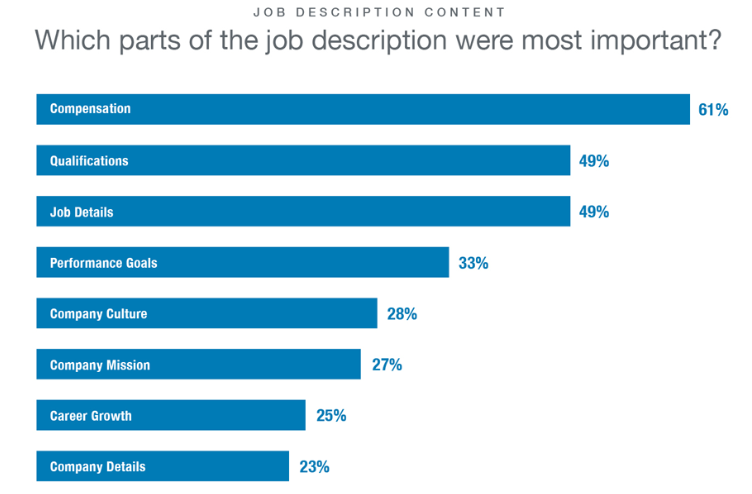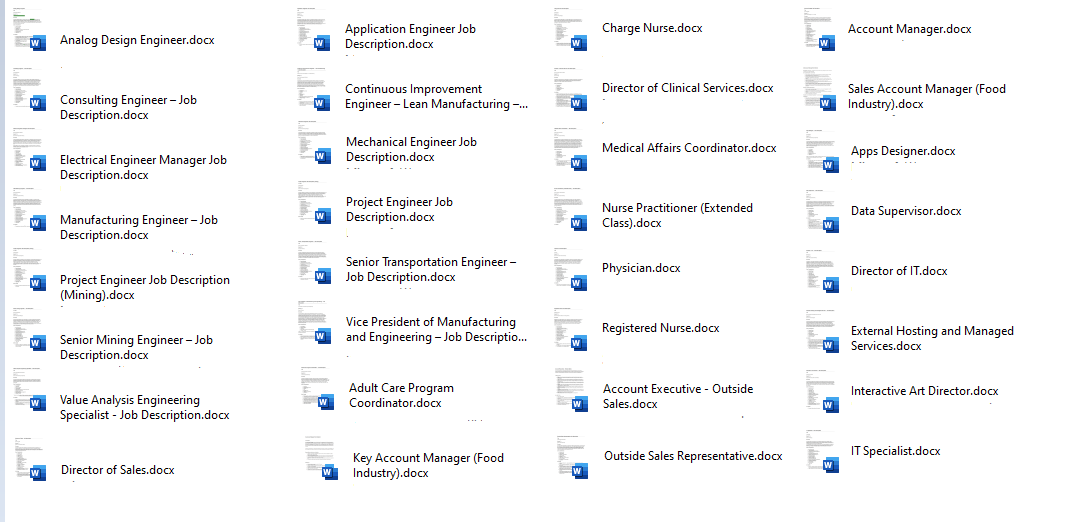How to Write Job Posts That Attract The Best Candidates
How to Write Job Posts That Attract The Best Candidates
By Kimberly Blake,
Senior HR Consultant

First impressions matter. Effective job ads are professional and engaging elevator pitches on your employer brand as a great place to work. As an HR consultant for over 20 years, I’ve learned that when job postings are great they are candidate-centric, user-friendly and authentically showcase why productive, successful hires join and stay with your organization.
Research suggests more than half of candidates assess the quality of a job posting as the main thing that influences their decision to apply for a job. In this blog, I’ll help guide you through the process of writing a great job ad based on my experience.
Below, we’ll discuss the following:
- What should I include in a job ad?
- What is the best format for writing a job posting?
- How to write a job posting template
- What are the best words and phrases to include in job postings?
- How to write a job posting on LinkedIn
What should I include in a job ad?
There are essential things every job ad needs to include. And it's not just important to include them, you need to highlight the most important elements. What are they? They are the elements that candidates find most important to them. According to a
LinkedIn study, 61% of job seekers find compensation information to be most important. This is followed by qualifications (49%), job details (49%), and performance goals (33%).

Research from Samantha McLaren
So, it's important to lead with the information candidates are looking for. Job seekers spend an average of only
14 seconds deciding if they should apply. If you don't have the most important information upfront, it's less likely they will submit their candidacy.
What’s the difference between a job posting and a job description?
A job description provides an in-depth overview of a job role's responsibilities and requirements, a job posting is a more concise and externally-focused advertisement aimed at attracting qualified candidates to apply for the position.
Both documents are essential components of the recruitment process and serve different purposes in communicating job details to potential candidates.
What is the best format for writing a job posting? Here are 4 tips to create a great template
The best format for writing a job post can vary by industry or the type of job. But there are some key elements that all job ads should follow to attract the most people to apply:
- Have a clear job title: No need for creative titles, make the ad clear and concise.
- Make it easy to read and scan: Use headers and bullet lists to make the ad easy to scan. Highlight the most important information.
- Put the most important information first: Lead with the information that candidates are looking for - compensation, qualifications, and job details.
- Keep it short and to the point: Short job ads perform better. Candidates apply 8.4% higher than average to posts in the 300-word range.
If you follow these points you’ll be able to create a customized template that works best for your company and industry. Do some research to identify industry-specific formats and tips for writing job ads. For example, what may be preferred in marketing could be frowned upon when recruiting engineering or healthcare talent. So, be industry-specific with your job ad.
Sample job post template - How to write a job posting template
A sample job post template can look something like this:
Header
- Job Title: Clear and concise, using relevant keywords.
- Company Name and Logo: Strong visual branding.
Job Summary
- Concise Overview: A brief description of the role and its responsibilities.
- Key Responsibilities: Bulleted list of primary duties and tasks.
- Required Qualifications: Essential skills and experience.
- Preferred Qualifications: Desirable skills and experience.
Compensation and Benefits
- Salary:
Be transparent about potential compensation and how it works. Be aware that Pay transparency legislation on the table in Ontario. It would require employers to state the exact page or a range. Not a bad practice to adopt if you can.
- Benefits:
Highlight competitive perks, benefits, and employee assistance programs.\
Company Culture and Information
- Brief Company Overview:
A concise summary of the company's mission and values.
- Company Culture:
Describe the work environment and values.
- Location and Conditions:
Describe where the job is based (e.g., office, remote, hybrid) and any relevant working conditions (e.g., travel requirements, physical demands).
- Additional Information:
Include any other information you think would entice a candidate to apply - perks, professional development programs, industry awards, etc.
How to Apply
- Clear Instructions:
Specify the application process (resume, cover letter, online form).
- Call to Action: Encourage applicants to apply immediately.
Equal Opportunity Statement
- Inclusivity:
Include a statement that your company is an equal opportunity employer and encourages candidates from all backgrounds to apply. The Accessibility Act for Ontario - AODA - requires the following statement in all job postings:
- (Company Name) welcomes and encourages applications from people with disabilities. Accommodations are available on request for candidates taking part in all aspects of the selection process.
- For more about AODA, check our blog post: Is Your Company Compliant With AODA
Contact Information
- Follow-Up:
Provide contact details for any inquiries related to the job posting.
What are the best words and phrases to include in job postings?
What you say and the words you use in your job posting play a key role in attracting the right candidates for the position. Think about job ads and recruiting in this way:
Job postings can be a lot like fishing. When you cast your reel (the job post) you need to use the right bait (words) if you want to catch the fish (great talent). Here are some things to consider:
Word selection is important
The words you use matter. You can’t just use the same ad repeatedly. Recycling old job posts can become an issue. Each time you post a job ad, it’s an opportunity for your company to get better and hire the best talent available. If you don’t put in the effort or don’t use the right words or phrases, you could be missing out on great talent in the market.
Optimize job ads with keywords
Millions of job searches are performed each month online by candidates who are looking for the positions you are trying to fill. Your ability to include the keywords or phrases that people are searching in your job ads to create a match will impact your ability to generate interest.
Ask yourself:
- Which words or phrases are candidates searching to find jobs?
- Which keywords are relevant to your job description?
- Which words would a candidate use to find a job ad like yours?
- Are you using key phrases in the job ad title and section headings?
Optimizing your job ad for search is only one of the many ways to improve your job postings. The words you use within the text are another opportunity.
Which words should I include in job ads?
Being clear and concise is the key to a great job ad. Use these tips to improve your ads:
- Be jargon-free: Your job ad is not the time to use industry jargon or insider terms.
- Use words that have meaning: You have a limited amount of words and time to get a candidate’s attention. Use words that have meaning. Try to avoid words or phrases that are overused and have lost their meaning. People become desensitized to overused terminology.
- Use simple words: Keeping it simple is most effective. Avoid using a technical word when a more simple word will do.
Get your tone right
The tone you use in your job ad language needs to give candidates the right impression. It should be aligned with your company's culture. LinkedIn research found that “job posts that are overly casual in tone tend to perform worse than more generic or formal posts. Candidates are 2-4x less likely to apply, and 4x more likely to view the company negatively.”
How to write a job posting on LinkedIn
LinkedIn is one of the first places candidates look for jobs online. So, it needs to be part of your recruiting strategy. Crafting an effective LinkedIn job posting is crucial for attracting top talent. It will include a lot of the essential elements of traditional job postings. You’ll want a strong title and job description. But some optimization elements are unique to LinkedIn. Here's a step-by-step guide for how to write a job post on LinkedIn:
1. Write a Compelling Job Title
- Clear and concise: Accurately reflect the role.
- Keyword-rich: Use relevant industry keywords and terms.
2. Create a Strong Job Description
- Company overview: Briefly introduce your company and its mission.
- Job summary: Clearly outline the role's purpose and responsibilities.
- Requirements: Specify essential qualifications and skills.
- Preferred qualifications: Highlight desirable but not mandatory attributes.
- Benefits and perks: Showcase what makes your company attractive.
- Company culture: Reflect your company's values and work environment.
- Keep it concise: Focus on essential information.
- Highlight growth opportunities: Show career paths within the company.
3. Optimize for Search
- Keyword research: Identify relevant industry terms.
- Strategic placement: Incorporate keywords naturally throughout the post.
- LinkedIn's job search function: Understand how it works and leverage it.
4. Visual Appeal
- Eye-catching image: Use a high-quality image that represents the role or company.
- Visual elements: Consider using bullet points or numbered lists for better readability.
5. Call to Action
- Clear instructions: Tell candidates how to apply.
- Strong CTA: Encourage immediate action.
6. Proofread Carefully
- Error-free: Ensure your job posting is professional and polished.
7. Leverage LinkedIn Features
LinkedIn's platform offers various customization options, such as adding questions for applicants or specifying preferred application methods. Take advantage of these features to streamline your hiring process.
- Leverage LinkedIn features: Use sponsored jobs, job boosts, and applicant tracking.
- Encourage employee sharing: Ask current employees to share the posting.
- Track and analyze: Monitor job performance to refine your strategy.
Looking for a job posting template?
AugmentHR has a large database of over 350 sample job ads and descriptions that can be customized, or we can work with the client to create a job description.

Photo by Chris Montgomery on Unsplash
Connect with us today to create a job ad that will attract the best candidates.
A final word on writing effective job ads
You need to write effective job postings to attract the best talent. Great ads help you in the hiring process by clearly communicating the goals of the job to prospective employees. A clear job description helps prospective employees understand their responsibilities, duties, and core values expected of the organization. Don't leave things to chance, we can help you craft a compelling job ad.
Kimberly Blake is a senior
HR Consultant with AugmentHR, an HR consulting firm centred in Toronto serving North American clients. Kimberly has helped a wide range of companies with their HR needs including Philips, Hershey’s and GSK. She’s helped companies manage periods of rapid growth while maintaining company culture with projects ranging from organizational design down to, yes, effective job postings.
H2: More HR Solutions For Growing Companies













